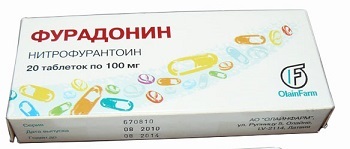Symptoms of ophthalmic diseases should not be ignored. If to postpone treatment, pathologies will give complications. Keratoconjunctivitis manifests itself in different ways: it all depends on its type and stage. Therapy of the disease does not last long. Preparations are selected taking into account the clinical picture.
Content
- 1Definition of disease
- 2Causes
-
3Symptoms
- 3.1Dry keratoconjunctivitis
- 3.2Viral
- 4Possible complications
-
5Treatment
-
5.1Medication
- 5.1.1Dry keratoconjunctivitis
- 5.1.2Viral Form
- 5.2Surgically
-
5.1Medication
- 6Prevention
- 7Video
- 8conclusions
Definition of disease
Keratoconjunctivitis is an ophthalmic pathology in which the conjunctiva is affected along with the cornea.Keratoconjunctivitis is classified by type and degree.
To the varieties include:
- Herpetic.
- Dry.
- Hydrogen sulfide.
- Adenoviral.
- Tuberculosis.
- Epidemic.
- Chlamydial.
- Atopic.
It is common for dry keratoconjunctivitis: the symptoms of this ailment cause discomfort. Adenoviral keratoconjunctivitis is also poorly tolerated: it is provoked by viral agents.
Causes
- Herpetic- provoked by the herpes virus.
- Hydrogen sulfide- observed in people under constant exposure to hydrogen sulphide. As a rule, initially there is acute or chronic conjunctivitis, and after that surface keratitis develops.
- Epidemic. In medical practice it is also called scrofulous or phlyctenular conjunctivitis. The development of such a form of keratoconjunctivitis by various viruses, which are considered epidemic, was provoked. It is quite a dangerous disease, because very quickly spreads.
- Adenovirus- the causative agent of adenovirus and also transmitted by airborne droplets. Initially, conjunctivitis is diagnosed against the background of the pathogen, then keratitis appears.
- Dry. For this species is characteristic the formation of threads or flaps on the surface of the sclera and the cornea of the eye with a size of 1 to 5 mm. These fibers consist of degenerated corneal epithelial cells. The disease develops against the background of the hypofunction of the lacrimal glands, i.e. the mucous membranes are over-dried for a long time. Also called dry eye syndrome.
In addition to the above, there is also the secretion of the keratoconjunctivitis of Taydeson, atopic, i.e. allergic, and chlamydial. Allergic can be both seasonal, caused by hay fever, and permanent. Also classified according to the form of percolation: acute and chronic.
Viral keratoconjunctivitis is associated with diseases that occur when exposed to viruses. The cause of the pathology may be lupus erythematosus. Viral keratoconjunctivitis develops in people whose body acutely perceives stimuli. Among other reasons: tuberculosis, tonsillitis, chronic rhinitis.
Symptoms
Dry keratoconjunctivitis
With the development of the pathological process, redness of the conjunctiva is observed.Conjunctiva is a membrane located on the eye.
Dry eye syndrome must be treated! The doctor prescribes medicines that moisturize the mucous membrane.
Dry keratoconjunctivitis is characterized by a decrease in the secretion of tears.Consider the stages of the disease.
- If the disease is at the 1 st stage, redness of the eyes is observed. In the conjunctival sac a pathological secret is formed in the form of strands.
- The second stage causes more discomfort. In this case, the corneal epithelium is peeled off.
- At the third stage, the cornea becomes covered with erosions. There are threads in the eye.
- The fourth stage is the most dangerous. The cornea begins to grow dull, and vision deteriorates sharply.
Viral
Pathologies of this type are contagious. As a rule, they lead to epidemics.
It is important to note that in the case of virus infection, the conjunctiva is initially affected, which leads to the development of viral conjunctivitis.Infection of the cornea occurs against the background of an untreated disease or in the case of rapid spread of the infection against a background of weak immunity. Viral and adenoviral keratoconjunctivitis are manifested:
- dry eyes;
- swelling of the eyelids;
- abundant with tearing;
- acute perception of light;
- reddening of the mucous membrane;
- secretion of pus from the conjunctival sac.
If the patient reveals at least one of these signs, you need to see a doctor!
Possible complications
The most dangerous is blindness.If untimely to treat keratoconjunctivitis, it will become chronic. Also, it should not be overlooked that an infection that affects the conjunctiva and the cornea also "attacks" the eyelids. The lesions of the latter lead to such diseases as blepharitis, meibomite and others.
In addition, the vascular system of the eye is also affected, which leads to the development of iridocyclitis- a chronic disease with frequent relapses, affecting the vessels of the anterior chamber of the eye (anterior uveitis).
Treatment
Medication
All types of keratoconjunctivitis, depending on the pathogen, are treated with appropriate drugs, which are prescribed exclusively by the doctor. We will consider popular forms, which are often diagnosed by ophthalmologists.
Dry keratoconjunctivitis
To cure dry eye syndrome, you need to use tear replacements. Medicines have a moisturizing effect. Depending on the stage of the disease, ointments containing artificial tears can be prescribed.
Effective drugs for the treatment of the syndrome are described in this article.
Lubricants are in demand in ophthalmology: these drugs are convenient to use. Unlike drops, they have a thick consistency. With dry eye syndrome, funds can be prescribed with zinc and vitamins.
Viral Form
The illness is treated differently. The doctor prescribes antibacterial drugs. If the disease is accompanied by dry eyes, the means for moistening the mucosa are recommended. In some cases, taking antihistamines is required.
Surgically
If keratoconjunctivitis is of an infectious nature, surgical techniques should be used. The operation can be recommended when a foreign body enters.
Prevention
- Compliance with hygiene rules.
- Healthy lifestyle.
- Proper moisturizing of the eyes.
- Timely treatment of diseases.
- Protection of the eyes from the computer, sunlight, wind.
- Replenishment of vitamin deficiency.
- Gymnastics for the eyes.
Causes of a thorn in the eye in man
Soft contact lenses are described in this article.
The causes of papillomas in the century http://eyesdocs.ru/zabolevaniya/papilloma/chem-opasny-na-vekax-lechenie-neduga.html
.Video
conclusions
Keratoconjunctivitis is a very serious disease. It must be treated in a timely manner, otherwise serious complications will arise. Medicines should not be chosen at their own discretion. When appointing medicines, the doctor takes into account the characteristics of the disease and its clinical manifestations. Folk remedies in this case will not help. To moisturize your eyes or relieve inflammation, you need to use medication.



